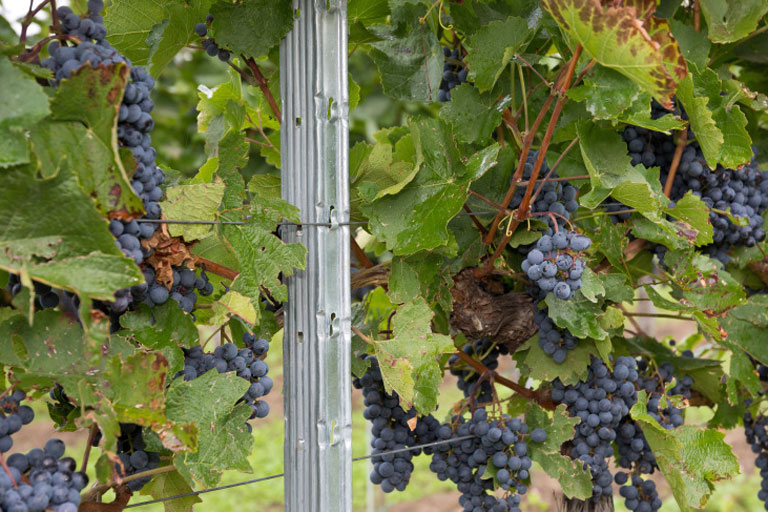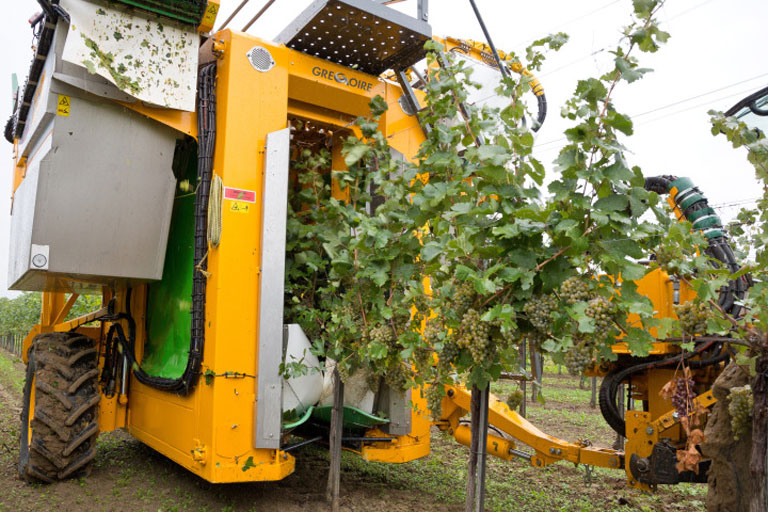This innovative vineyard technology provides growers with a modern, sustainable and durable method of supporting and cultivating their grapevines
The history of viticulture stretches all the way back to the Neolithic period, while the Romans were among the first to adopt the trellis system that would lift vines from the floor and lead to the creation of what we would recognise as modern vineyards. With this technique largely unchanged for hundreds of years, the difficulties associated with maintaining a sturdy and reliable system have confronted growers for millennia.
voestalpine’s leova system is a long-lasting and cost-effective way of supporting grapevines on wine growers’ farms. It is also extremely durable, as the first set of poles installed in the 1960s, are still in use today and show little sign of needing replacement.
Josef Lamplmayer is Managing Director of voestalpine Krems GmbH, a company of voestalpine’s Metal Forming Division, which produces the leova system and is a world specialist in innovative tubes and sections, with an emphasis on mobility, energy, construction, mechanical engineering and trading partners.
“It is long-lasting like concrete, but flexible like wood, and, considering the entire lifecycle, it has the best cost-performance-ratio when compared to alternatives.”
Josef Lamplmayer, Managing Director, voestalpine Krems Gmbh
“The leova combines a complete system for all vine training processes,” he says, “with advantages like quality steel from our own steelworks, extremely long-lasting and weather-resistant surfaces and high quality from state-of-the-art precision manufacturing.
“It is long-lasting like concrete, but flexible like wood, and, considering the entire lifecycle, it has the best cost-performance-ratio when compared to alternatives.”
 A leova system vineyard pole
A leova system vineyard pole
One of the key aspects of the leova system is the high-quality steel, produced in Linz, Austria, meaning the poles are light, long-lasting, and super-strong.
The manufacturing facility in Krems, Austria, employs state-of-the-art methods when roll-forming the tubes that make up leova. The material of the poles is hot dip galvanised steel, as well as a model that contains copper, allowing the surface to oxidise and form a protective layer of rust that shields the steel below.
“We are confident the steel we use is better than other materials from an ecological perspective, even wood.”
Josef Lamplmayer, Managing Director, voestalpine Krems Gmbh
With around 75 per cent market penetration in Austria, and growing adoption in Germany and Italy, vineyard owners are becoming more aware of the unique characteristics of the leova system, including its lifecycle benefits.
“We recently had an end customer asking about the carbon footprint of leova,” says Lamplmayer. “This is one of the first requests we’ve had of this nature, but we are confident that steel is the more sustainable solution when compared to other materials.
“Our steel lasts longer than competitor materials and, like all steels, is fully recyclable, whereas the recycling of wooden poles is a challenge, or even impossible due to the required chemical treatment for weather resistance.
“The assessment of environmental impacts of products requires a holistic approach that takes the entire lifecycle into consideration. From this perspective, leova steel vineyard poles outperform other materials and underscore the clear advantages of this material,” he adds.
 The leova HARVESTAR system in action
The leova HARVESTAR system in action
The leova system also helps vineyard growers in other ways due to its ‘unique wire clamping system’ that allows for it to be tightened quickly and easily. With wind and other factors contributing to a loosening of the wire that supports the grapevines this is particularly important, and the special end poles for fixing the wire have rendered this problem a thing of the past.
voestalpine’s HARVESTAR system includes super strong stamped posts which are designed especially for use in combination with harvesting machines, which are, of course, also made out of steel.
For Lamplmayer, steel’s popularity in viticulture can only be set to increase as growers become more aware of its unique qualities, particularly its sustainability credentials. “The consideration of sustainability aspects along the whole value and supply chain is continuously gaining in importance,” he says.
“Steel poles are not only the most durable vineyard poles, but also the most sustainable with the lowest environmental impacts.”
Images: voestalpine, iStock